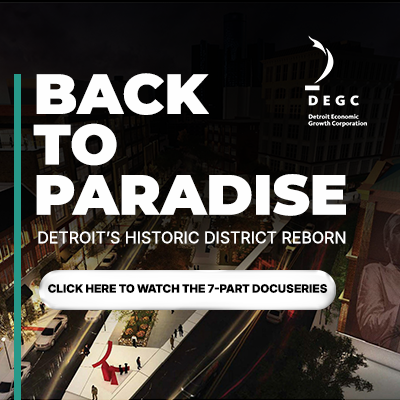How Racist Laws Stole Black Wealth Through Homeownership
The legacy of systemic racism, through Jim Crow laws and redlining, has had devastating effects on Black homeownership, equity values, wealth generation, and legacy building. These practices systematically denied Black people the opportunity to own property, which is the bedrock of wealth in America. The result has been the exclusion of generations from the critical wealth building benefits of homeownership, leading to a persistent wealth gap that continues to harm our community today. Several laws and practices, like Jim Crow, had a profound and lasting impact on Black homeownership in the United States. These laws and policies, both formal and informal, were designed to limit access to wealth building opportunities. Here are some of the most significant ones:
- Jim Crow Laws (Late 19th Century to 1960s)
Jim Crow laws, primarily in Southern states, enforced racial segregation and institutionalized racial discrimination across multiple areas of life, including housing.
- Segregated Neighborhoods: Black people were often restricted to certain neighborhoods, usually the least desirable areas with limited access to amenities, schools, and services. These neighborhoods had lower property values and fewer opportunities for homeownership.
- Limited Legal Recourse: Under Jim Crow laws, Black people had little to no legal recourse when they faced discrimination in housing, making it difficult to challenge segregation or improve living conditions.
- Redlining (1930s-1960s)
Redlining was a widespread discriminatory practice in housing and lending, primarily carried out by the federal government and banks.
- Federal Housing Administration (FHA) and Home Owners Loan Corporation (HOLC): In the 1930s, the HOLC created residential security maps that categorized neighborhoods based on perceived lending risk. Neighborhoods with significant Black populations were marked in red as “high risk” or “hazardous.” The FHA adopted these maps and refused to insure mortgages in these areas, making it nearly impossible for Black families to secure home loans.
- Impact on Property Values: Redlining systematically devalued properties in Black neighborhoods, trapping Black homeowners in areas with declining value and preventing wealth accumulation through homeownership. Over time, redlining also prevented investment in these areas, leading to economic decay, poor infrastructure, and underfunded schools.
- Racially Restrictive Covenants (Early 20th Century to 1960s)
Racially restrictive covenants were legal agreements written into property deeds that prohibited the sale or rental of property to people of certain races, particularly Black people.
- Legal Enforcement: These covenants were legally enforceable until 1948, when the Supreme Court ruled in Shelley vs. Kraemer that courts could not enforce racially restrictive covenants. However, even after the ruling, these covenants continued to shape housing patterns informally for years.
- Exclusion from Wealthy Neighborhoods: These covenants excluded Black families from moving into wealthier, predominantly white neighborhoods, denying them access to better housing, schools, and services. This practice kept Black families in lower-income neighborhoods, which suffered from disinvestment.
- Urban Renewal and Highway Construction (1940s-1970s)
Urban renewal programs, often referred to as “slum clearance,” disproportionately displaced Black communities in cities across the country.
- Destruction of Black Neighborhoods: Urban renewal projects targeted areas deemed “blighted,” which were often Black neighborhoods. This led to the destruction of homes and communities, forcing Black families into overcrowded and poorly maintained public housing or rental units.
- Highway Construction: The construction of interstate highways often cut through Black communities, displacing thousands of residents and further devaluing the remaining properties. These projects devastated many thriving Black neighborhoods and stripped them of economic opportunities.
- The G.I. Bill (1944)
The G.I. Bill provided returning World War II veterans with benefits, including low cost home loans. However, Black veterans were largely excluded from these benefits.
- Discriminatory Lending: While the G.I. Bill itself did not explicitly discriminate, local VA offices and banks often refused to lend to Black veterans or denied them access to FHA insured loans. As a result, Black veterans were unable to take advantage of home loan programs that helped millions of white veterans become homeowners and build generational wealth.
- Segregated Housing: Even when Black veterans could obtain loans, racially restrictive covenants or redlining practices prevented them from purchasing homes in many suburban areas, limiting their housing options to segregated and underdeveloped neighborhoods.
- Blockbusting and Steering (1950s-1970s)
Blockbusting and steering were predatory real estate practices that exploited racial fears and further entrenched housing segregation.
- Blockbusting: In this practice, real estate agents would spread fear among white homeowners that Black families were moving into their neighborhoods, driving down property values. Agents would then convince white homeowners to sell their homes at a loss and subsequently sell those homes to Black families at inflated prices. This practice destabilized neighborhoods and further segregated housing.
- Steering: Real estate agents would “steer” Black homebuyers away from white neighborhoods and into segregated, predominantly Black areas. This practice limited housing choices for Black families and perpetuated residential segregation, even after the Fair Housing Act was passed.
- Discriminatory Lending Practices (1970s-present)
While legal segregation in housing was formally dismantled by the Fair Housing Act of 1968, discriminatory lending practices have persisted in various forms.
- Predatory Lending: In the late 1990s and early 2000s, predatory lenders disproportionately targeted Black borrowers with subprime loans that had higher interest rates and less favorable terms, even when they qualified for conventional loans. These loans contributed to the foreclosure crisis that disproportionately affected Black homeowners during the 2008 housing crash.
- Continued Redlining: Although outlawed in 1968, modern forms of redlining still exist. Banks have been found to provide fewer loans in predominantly Black neighborhoods or charge higher interest rates to Black borrowers, further limiting opportunities for wealth building through homeownership.
Conclusion: The Lasting Legacy of Discriminatory Laws
The combination of Jim Crow laws, redlining, racially restrictive covenants, urban renewal, the G.I. Bill’s discriminatory implementation, and modern lending practices has systematically denied Black families the opportunity to build wealth through homeownership. This has contributed to the racial wealth gap that persists today, with Black families owning significantly less wealth than white families on average.
Addressing these historical injustices requires not only policy changes but also a concerted effort to create pathways to homeownership for Black families because Property is Power! By dismantling the legacy of these discriminatory laws and practices, we can begin to build a more equitable future where Black families can fully participate in the wealth-building opportunities that come with owning a home.


